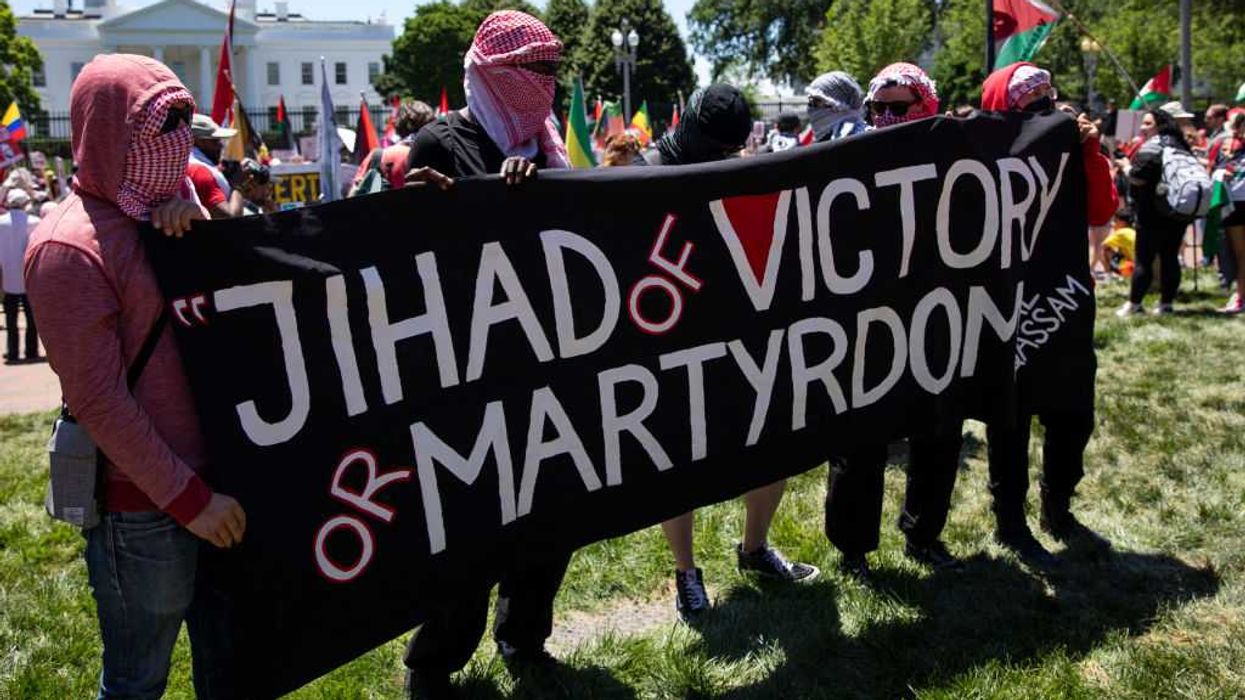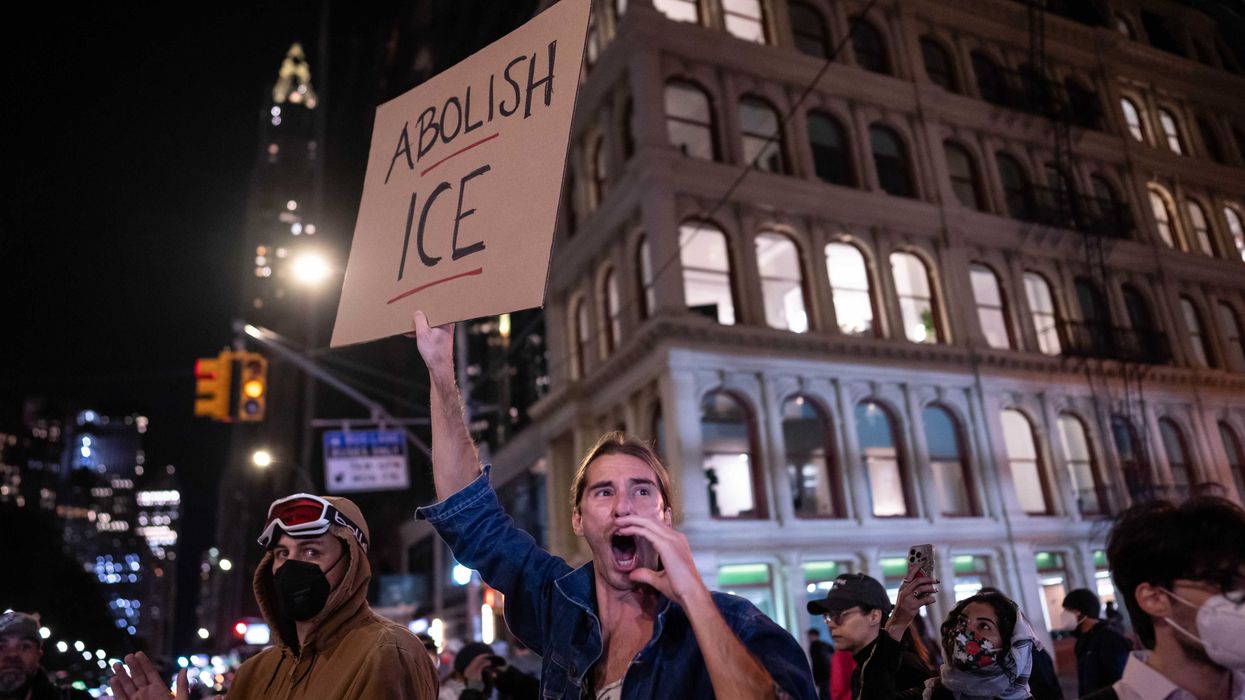Glenn was in Silicon Valley this week speaking at a number of tech conferences and meeting with some of the biggest dreamers and creators alive today. While at the Launch Festival, Glenn spoke with Nation Builder CEO Jim Gilligan about how his company is connecting people all over world.
Glenn: I want to introduce you to a guy who is one of the people who believes he can change the world or together we can change the world. His name is Jim Gilliam, and he is the founder and CEO of something called Nation Builder. How are you?
Jim Gilligan: Hi, Glenn. Thanks for having me.
You have a fascinating story because of your journey. You have cancer. How are you now?
I’m good. I’ve got a little bit of skin cancer here left, but that’s just my third bout. I had leukemia. I had non-Hodgkin’s lymphoma, and I’ve been great for about eight years.
Okay, and so you have gone through a fundamental transformation as a human being. A lot of people have seen the video The Internet is My Religion, and if we have time, I want to talk to about it, because I think it’s an interesting, really interesting part of your journey, but I want to talk to you a little bit about Nation Builder and what you’re trying to accomplish and what you think can be done.
I’ve had this just enormous blessing to have this experience of community in my life. It started when I was very young in a big mega-church in the early 80s out in San Jose, and then over my life, like I kind of lost that faith, but I started to sort of find a new faith in sort of the power of a connected humanity and like what’s possible when people come together to help each other. So, I made a bunch of like documentary films in like 2o04 and 2005, and they were the kinds of films that the traditional media, the stories that they weren’t telling, so I was really passionate about getting them out there.
Because I was just an Internet geek, we kind of hacked all the like online stuff to sort of get people to distribute the films and host screenings and do all these things. In that process, the only reason we were able to really do that effectively was because I just happened to have like all of these tech skills so I could like pull together, you know, this donation processing system and this like email newsletter thing and a website and video and all this stuff and make it work. But the average person sort of didn’t have access to be able to do that.
Correct.
So, I would go around, and I would go to like film festivals and be like, “Hey, you can get your documentary out there,” and all this stuff. Folks would be like, “Okay, great, I’m signed up. I want to sign up. I want to do that.” They’d be like, “What do I do?” You know, “What do I do next?” I’d be like, “Well, you have to do this and this.” And then, “Can I hire you?” I was like, “No, not really.” So, that really set me on like what could I contribute to help people sort of tap into this immense power of building community online to accomplish whatever it is that you want to make happen? That led me into politics, because organizing people is about very much politics.
You know, when we started something called the 9/12 Project, years ago, right around the Tea Party time, and the Tea Party was doing similar things, we were focused on principles. They were focused on politics, but almost everybody who got involved were looking for somebody who was 20 that knew something about building a website or how to connect with each other, and a lot of people still don’t know how to do it. I mean, the power is unlimited if you know how to do it, you know? So, who is using it, and what are the results?
So, we’re seeing all kinds of different folks using it. About half of our customers come out of politics or advocacy-oriented efforts. They look at Nation Builder, and they’re like, “Yes, okay, I don’t have to deal with all this muck anymore,” and they know what to do with it. It’s like a toolkit, but there also seems like another half of our customers are smaller folks, like there’s a gelato shop in downtown LA that uses it to sort of organize their community. They have folks like suggesting like what flavors they should try next. Duck Dynasty did a whole campaign like overnight, right, when that whole thing happened. They drove a whole amount of like attention and change around.
They used it for the gay issue?
Yeah, so when the media really started to pick up on that, like overnight they got a site set up on Nation Builder, and they grew a list of people to about 250,000 people. They’re now a whole organization called Faith-Driven Consumer that’s working on a whole host of issues on the area, but there are actually press articles about the fact like how on earth did they get a website up like so quickly and sort of capitalize on that moment?
Right. So, how does it work?
So, you’ll know things like you have a Facebook page, and you have like a YouTube channel or Twitter or whatever, but if you want to sort of take it to the next level, right, where is like you’re building your own database, your own nation, what we would call it, you need to sort of like really up your game. You need to like have your own website. You need to connect into all of those different places like Facebook and YouTube and Twitter and whatnot, sort of pull all those people together and actually own those relationships, know who the people are and start to actually engage them.
So, when you’ve got a lot of folks that really care about what you’re doing, like the next step, right, is you have to find the folks who care the most and then really engage them and say, “Hey, why don’t you take a leadership position, right? Why don’t you sort of go and organize your own group of people around this and give them the tools and empower them to do that?” Because the most effective way to organize is people sharing their stories with each other, and the way that you scale that is when you create the leadership capacity like within your donors, your supporters, or your customer base.
So, Nation Builder was really designed to help you find those people, really connect with them, and empower them with the tools to make this stuff happen.
Old media doesn’t understand this, and old traditional thinking doesn’t understand that you’re so much more effective when you’re not leading the parade all the time, you know? They fight against it. Everybody fights no, no, you know, we’ve got to be leading the parade. How are you getting politicians to use this when politicians generally are I’m going to control the message, I’m going to control all of it? This requires you to let it go.
Yeah, really that is exactly the issue. It’s a toolkit. People can use it how they want to use it, but what we’ve found is like the most effective use of it is when you sort of give up that control. So initially, like a very early version of Nation Builder, I was like okay look, it’s all about giving up like power to like your members and your customers.
Let them do it.
And I went out, and I was preaching this to like everybody, and nobody bought it, nobody. So, I completely flipped it around. I said it’s the exact opposite, about everybody building their own power, which everybody wants to do. I realized that like the sum total of all of that is that then everybody has power, right?
It’s the same theory, just a different way to look at it. One is more altruistic.
It’s a different way into it. There’s also a business model behind it which works for us, which is nice, so we can scale it all up and make it work. But by providing the tools to everybody, right, if you’re in power and you’re not like really engaging folks and helping like other folks do the leadership, somebody else will. That’s the big opportunity.
So, give me some examples of the best uses of it.
Well, oddly enough, Senator Mitch McConnell has used Nation Builder really well.
Oh my gosh.
So, in his last election campaign, he used Nation Builder to do a lot of field organizing, which generally speaking, the Republicans are sort of, you know, generally not the best at, but they really got into it. They had walk sheets, and they were scanning them all in. The senator was like actually there at the trainings, right? He was like really engaged. I was pretty impressed by that.
Wow. So, Nation Builder can be used for good and evil.
We don’t get to decide that.
No, I know. I know. I do. I do.
Let’s talk a little bit about your journey, because you have gone through a lot and have started at a real religious place. You went to Liberty University, a real God-fearing guy, and you’ve ended or at least you’re at this point in a completely different place.
Yeah, I found God somewhere else. You know, in the speech, I said, you know, God is just what happens when humanity is connected, and that community, the power of that community is immense. What I spent a lot of time thinking about is like, you know, there is a God of love, right? There is also a God that can be very vicious and judgmental, and I see so much of that happening, right?
I don’t think of that as God, but you’re thinking of God as humanity.
But we can see it happening like as we connect more and more, right, sort of the online lynch mob sort of thing that happens sometimes and the way things spread. There’s amazingly wonderful things happen, like, you know, people coming together to save my life, right? So, it’s like there’s incredible, wonderful power in it, but there’s also like we’re in this like adolescence of understanding what that power really is and how we can sort of most effectively channel it. What really makes me excited is that we get to decide that. We get to choose how that plays out, and so I’m really hopeful that people will look more and more to how they can contribute, right, to making this world better, right, making this a God more of love than of vengeance.
Has the world ever been in a place like this before?
Oh no, no.
I don’t think people really understand how profound of a moment we’re at right now.
I see it as communities. M. Scott Peck is a psychologist who did a lot of work on understanding how community works, and he identified sort of four stages that lead to community, pseudo-community. Pseudo-community, it’s like the dinner party, right, where like everybody goes, and no one talks about politics or religion, and everyone is sort of nice and cordial to each other. Then, you know, you go home with your spouse afterwards in the car, and you’re like sort of talking dirt about everybody, right? Like that’s pseudo-community.
But then the next phase is chaos, and chaos is when people start getting real. It’s when they stop with all of those sort of like niceties, and they start actually talking about the real issues. Then there’s two ways that you can go from there, right? You can organize your way out of that chaos where you create systems and structures and laws and like all of this infrastructure which we have done, like, that is the world, or you can empty, and you can just let go of all of your preconceived ideas of who other people are, right, everything, all the things that you try to do to change somebody else, and you start to accept people for who they are. Out of that can come real, genuine community.
So, we see that happening like on small levels. You can see it happening in churches. You can see it happen in school. You can see elements of it happening here and there sometimes, and it’s really special and amazing.
That happened today with me.
Did it?
Yeah, I mean, I walk out on stage with there had to be 20% of the people there that were like, “You’ve got to be kidding.” I’m reading the tweets, and they’re like, “I don’t like this guy. I’m confused. I really liked what he had to say.” It was just a moment of hey, let’s listen to each other for a minute. Let’s just listen to each other and break down the stereotypes. It’s really an amazing…fear is our enemy.
Amen.
If we can get rid of the fear and let go and say you know, “I may disagree with you on a lot of things, but I recognize that there is more that we have in common than not,” we can really create an amazing world.
The Internet is my religion, and I would say the greatest sin is fear. That’s the one thing that holds us back from creating what we are meant to create. It disconnects us from each other, absolutely.
What a pleasure. God bless.
Thank you.
Thank you.

 Joe Raedle / Staff | Getty Images
Joe Raedle / Staff | Getty Images
 AASHISH KIPHAYET / Contributor | Getty Images
AASHISH KIPHAYET / Contributor | Getty Images Harold M. Lambert / Contributor | Getty Images
Harold M. Lambert / Contributor | Getty Images Adam Gray / Stringer | Getty Images
Adam Gray / Stringer | Getty Images